
Can Americans travel to Cuba? The short answer is yes, Americans can travel to Cuba. Keep reading for all the details you need to know for your visit!
Disclosure: This post may contain affiliate links, which means we’ll receive a commission if you purchase through our links, at no extra cost to you. Please read full disclosure for more information.
A common misconception is that Americans cannot travel to Cuba.
And well, Americans cannot travel to Cuba for tourism.
But there are other ways to travel there legally as a US citizen. (We did it!)

But first you must keep in mind that Cuba is not your typical vacation.
If you are looking for a unique cultural experience and enjoy learning about history in a place that takes you outside of your comfort zone, then this may be the trip for you.
Otherwise, you may want to consider another Caribbean island.
RELATED ARTICLE: 5 Tips to Save Money on Your Turks and Caicos Vacation
But let’s back this up a little bit.
Why can’t Americans travel to Cuba for tourism?
In the 1960’s there was a trade embargo between the US and Cuba as a result of Cuban communism being incompatible with American principles.
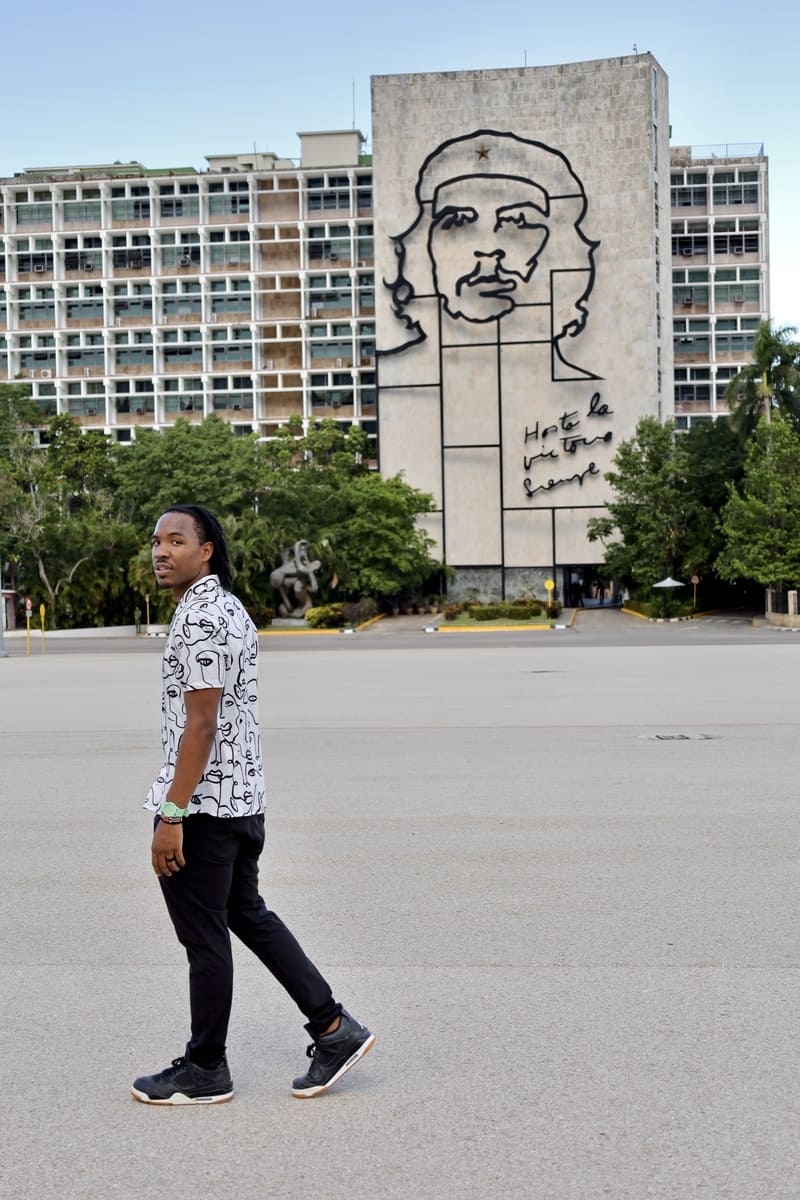
There are far more details and complexities.
But long story short, Americans cannot legally support the Cuban government.
Most things that fall under the category of tourism (certain hotels, certain restaurants) are run by the Cuban government.
Those are a no-no for U.S. citizens.
Even still, there are exciting places for you to go, comfortable places for you to stay, and even places for you to eat that are privately owned.
Once you know what and where they are, it’s easier to navigate the country as an American.
If you’ve made up your mind that you want to plan a trip to Cuba from the United States as an American, keep reading!
There are quite a few important steps that you will need to take, and I’m giving you all the details.
After reading this article, you will be more prepared to take on this one-of-a-kind trip.
Need a quick, easy guide to planning & saving money in Cuba? >> Download our Explore Cuba Travel Guide!
RELATED ARTICLE: How To Travel More Spend Less: See the World and Save a Dollar
12 Categories of Authorized Travel to Cuba
The United States is consistently ranked as having one of the top 10 strongest passports in the world. Americans are privileged to be able to travel to 186 locations without the need for a visa.
The luxury of traveling visa-free with such ease can create barriers for wanting to travel to places that require a visa.
Namely Cuba.
Cuba happens to be the only place in the Caribbean that requires US citizens to have a visa to enter.
But don’t let the need for a visa be what stops you from planning a trip to Cuba.
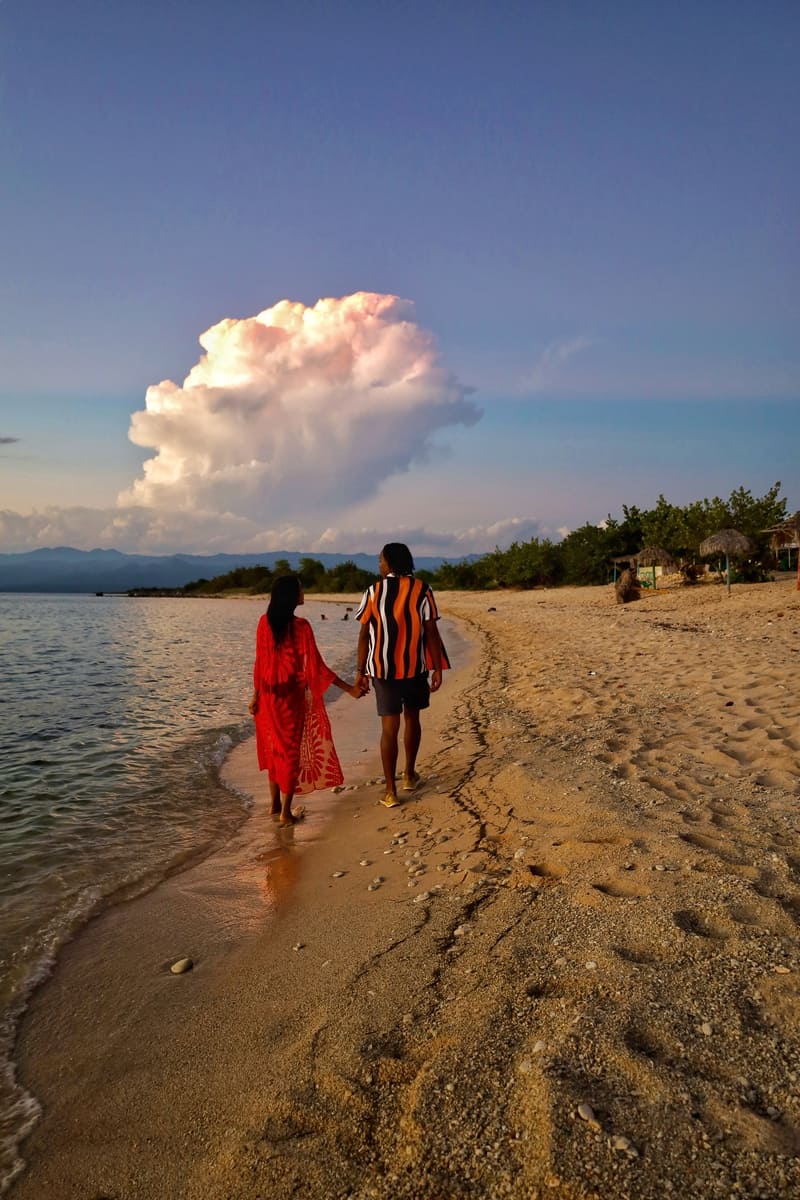
There are a couple of ways for you to get a visa for Cuba, and they’re quite simple. First, you need to determine your reason for travel.
It must be one of the 12 approved travel categories created by the Department of Treasury’s Office of Foreign Assets Control.
- family visits
- official business of the U.S. government, foreign governments, and certain intergovernmental organizations
- journalistic activity
- professional research and professional meetings
- educational activities
- religious activities
- public performances, clinics, workshops, athletic and other competitions, and exhibitions
- support for the Cuban people
- humanitarian projects
- activities of private foundations or research or educational institutes
- exportation, importation, or transmission of information or informational materials
- and certain authorized export transactions
You may have heard of the “people to people” category, which was a popular selection for Americans traveling to Cuba. But you no longer can travel in the “people to people” category. That no longer exists as an option.
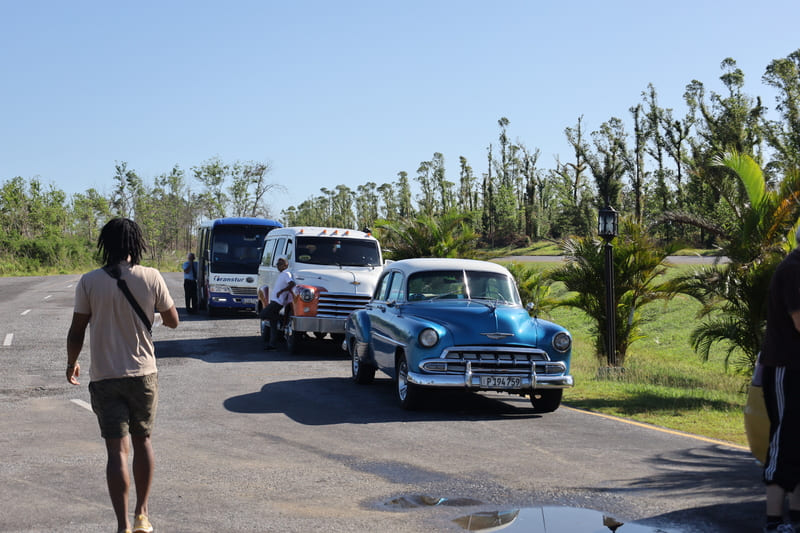
And you know your reason for travel isn’t “tourism” like it usually may be when filling out customs forms to enter other countries. So what is your reason for going to Cuba, and is it approved?
Check out number 8: “support for the Cuban people.”
This was our reason for traveling to Cuba, and the reason I recommend.
While you can appreciate the beauty of Cuba, it is apparent that it is riddled with poverty.
By going for support for the Cuban people, you really are supporting the local people and small businesses. Spending your money directly with the locals can leave a positive mark.
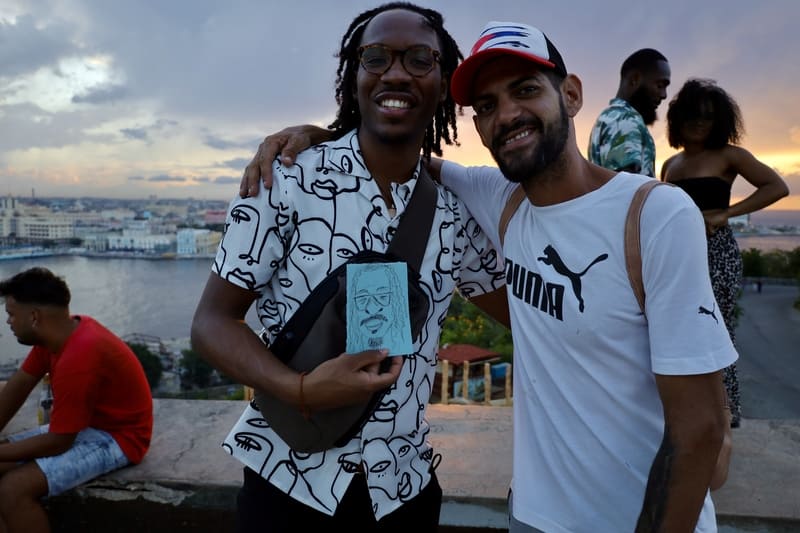
When you go for support for the Cuban people, it’s on the honor system.
The only time anyone asked us for our reason for travel during our trip was at customs in the airport.
RELATED ARTICLE: Seriously Great Things to Do in Viñales Cuba: Travel Guide
How to Get a Visa as an American
A tourist card is required to enter Cuba from most countries. This Cuban tourist card is oftentimes called a Cuban visa, but is officially known as a tourist card.
Although Americans are not going to Cuba for the purpose of tourism, the name of the “visa” is still the Cuban tourist card.
There’s two ways to get this Cuban tourist card, and both ways require you to get it before you board your flight to Cuba.
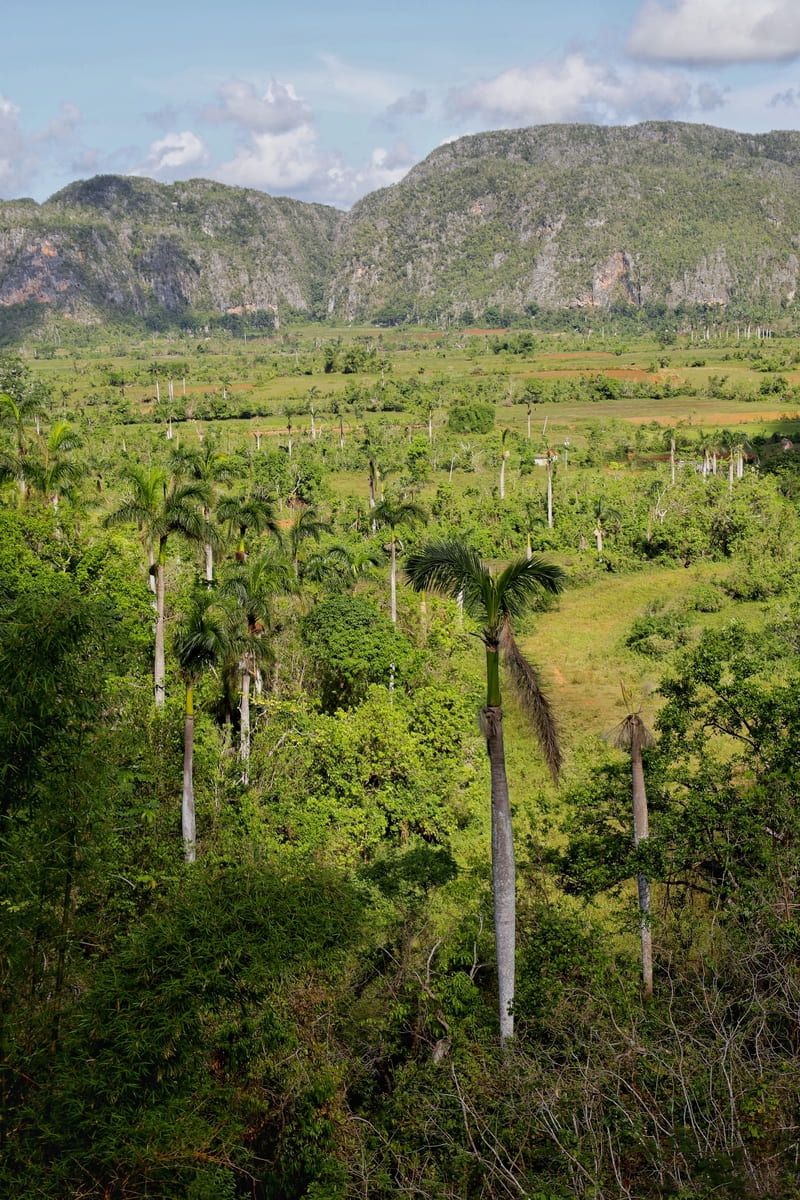
You can either get it online or in person. The cost of a Cuban tourist card varies depending on who you purchase it with. You can expect to pay anywhere from $50 to $150 USD per person for the Cuban tourist card.
Where to Get a Visa (Tourist Card) Online?
If you are planning to purchase your Cuban tourist card online, you can do so through Easy Tourist Card.
They accept all major credit and debit cards, and Paypal payments. For peace of mind, they use tracked delivery, and shipping takes only about one week.
A Cuba visa through Easy Tourist Card costs ~$100 USD for Americans, and this is a great option if you want one less thing to worry about before your trip. Just be sure to order with enough cushion time to receive it before your flight.
The tourist card does not expire before you enter Cuba. But once you enter Cuba, the tourist card is valid for 90 days.
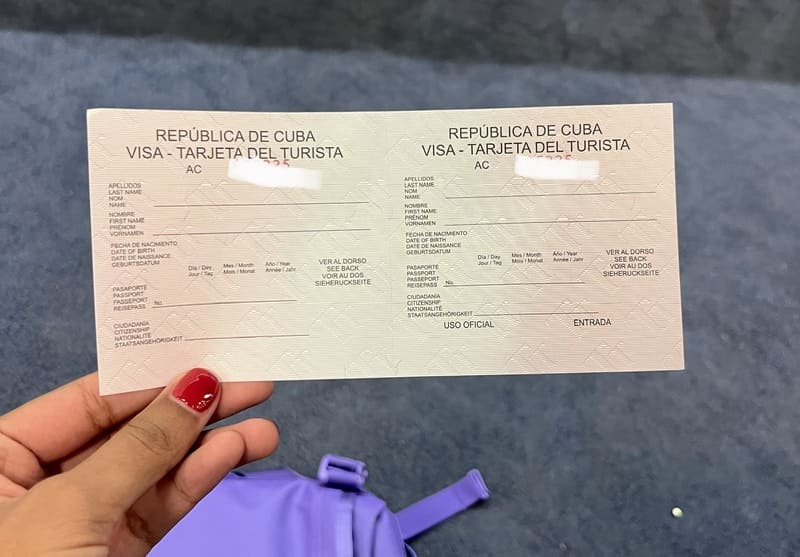
Where to Get a Visa (Tourist Card) in Person?
You also have the option of getting your Cuban tourist card in person at the airport.
Right before your flight, there will be a blue “Cuba Ready” booth at your gate.
My husband and I flew with American Airlines from Fort Lauderdale to Cuba.
About an hour before our early morning flight, they began to set up the “Cuba Ready” booth and announced over the loudspeaker for passengers without a visa to come to the “Cuba Ready” booth to purchase one.
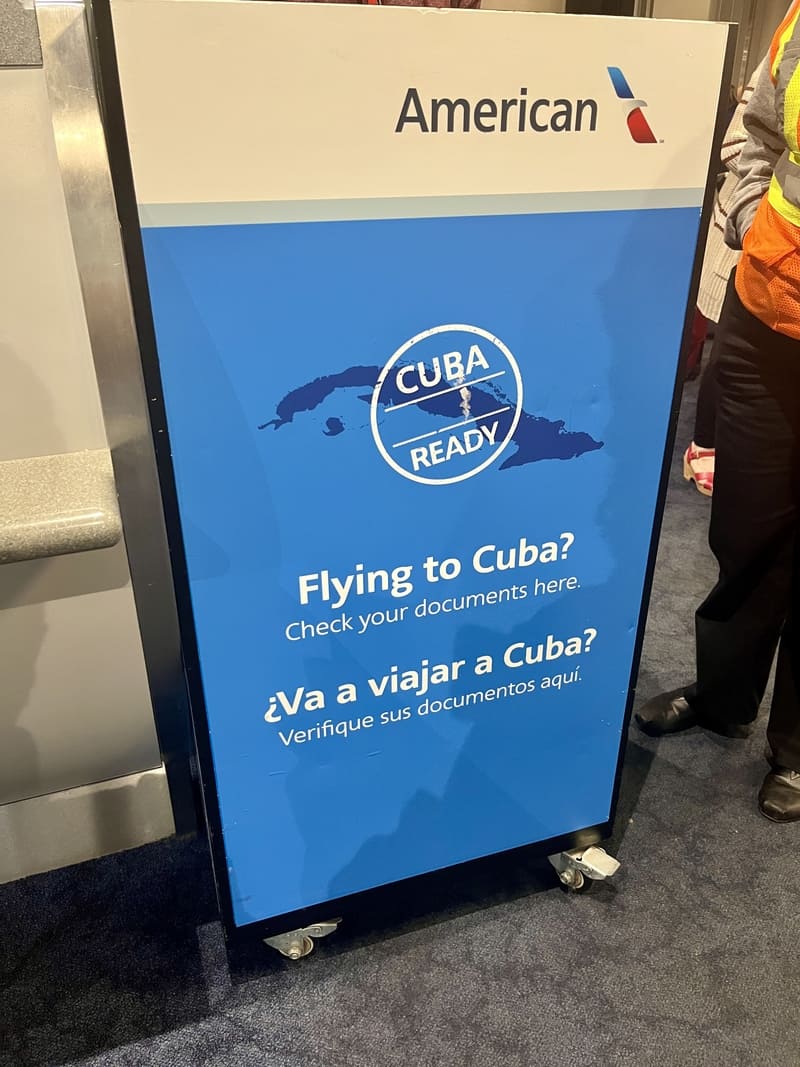
This is the route we took.
We paid $100 USD per person and you can pay with either cash or card.
Our friends flew with JetBlue from Miami to Cuba, and paid $50 USD per person at the gate.
When looking at flight prices, consider the cost of a visa, as well, to determine your maximum savings option.
It was a very simple process. And they won’t let you board your flight to Cuba without your Cuban tourist card.
RELATED ARTICLE: 20 Key Airport Tips to Make Travel Easier
RELATED ARTICLE: What Do I Need to Travel to Curacao from the USA?
How to Find a Cheap Flight to Cuba
Now that you’re more comfortable with the visa process and how simple it can be to get a visa to Cuba as an American, let’s tackle flight deals to Cuba!
When you finally figure out where in the world you want to go, and you search for a flight and see it’s a gazillion dollars, that’s discouraging.
That can be a huge barrier to travel. We’re here to overcome these common barriers.
Let’s open up Skyscanner, and try to be as flexible as possible.
We already have a set destination in mind: Cuba. So let’s show a little flexibility with our dates.
Explore different weeks, different months and identify which time works best for your schedule and budget.
Also keep in mind the best time to travel to Cuba.
It wouldn’t be ideal to go in the middle of hurricane season.
So let’s look outside August through October. We went in November, right after hurricane season ended.
Most flights from the United States to Cuba leave from Florida.
We’re talking Fort Lauderdale and Miami to Havana. Although I have seen some direct flights with United Airlines from Newark to Havana.
Depending on where your origin location is, you may want to make two separate flight bookings to save money.
For example, we were flying from JFK to Fort Lauderdale to Havana. This was the route that appeared when searching New York to Cuba.
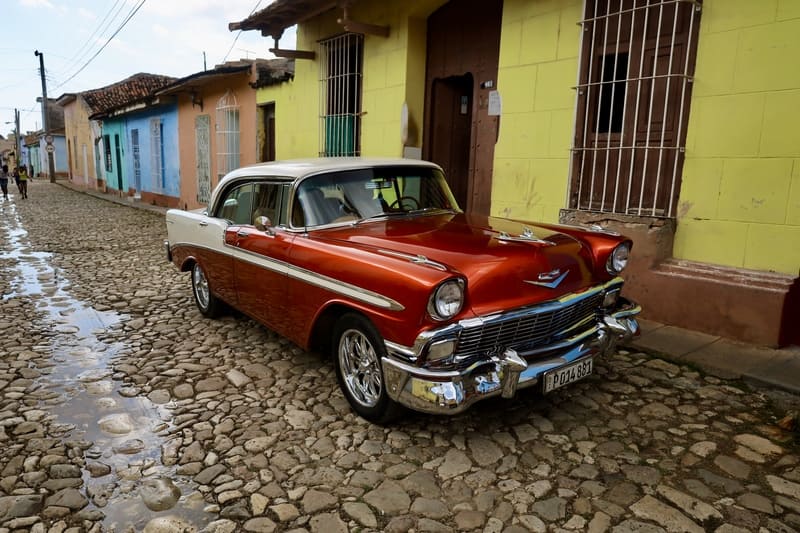
Let’s quickly compare costs of each leg of this flight journey. A roundtrip ticket from JFK to Fort Lauderdale was around $65 USD per person.
A roundtrip ticket from Fort Lauderdale to Havana was around $274 USD per person.
This would make our entire journey around $340 USD per person using two separate round trip bookings. (One JFK to Fort Lauderdale roundtrip, and another Fort Lauderdale to Havana roundtrip).
When we searched roundtrip tickets from JFK to Havana, flight prices were around $450 USD per person, with the same layover in Fort Lauderdale.
That’s over $100 USD more per person if we didn’t search as separate flights. That $100 USD per person difference could go towards the Cuban tourist visa instead!
Let’s take our savings even further.
Depending on the type of flight fare ticket you book, you could change your flight without incurring a fee. This is a perk of booking your fare directly with an airline.
Check your airline’s change policy and make sure you have an appropriately tiered ticket to do so without being charged a fee.
We booked with American Airlines’ main cabin, and kept our Skyscanner alerts on for our flights.
Once we noticed a price drop, we switched to the cheapest ticket option, without being charged any fees for doing so.
Want to know the TOP 9 ways to find cheap flights? >> Download this free resource!
RELATED ARTICLE: 4 Day Itinerary for Puerto Rico
Health Insurance, Health Forms, and COVID Restrictions in Cuba
One common cause of confusion is the requirement for travel insurance for Americans traveling to Cuba.
Health insurance with coverage in the area is mandatory for anyone traveling to Cuba.
In many cases, there will be a health insurance fee built into the price of your flight ticket.
Double check the fare, taxes and fees section for the health insurance when you purchase your flight.

At least 48 hours before your flight, you will need to complete a free health screening form.
This is called the D’Viajero form. It takes less than five minutes to complete. Follow the link to the D’Viajero form here.
You must show proof of completion of your online D’Viajero form before boarding your flight and you may need to show your completed form when you land in Cuba, as well.
Just a heads up, you won’t have phone service or Wifi when you land in Cuba, so you should have a screenshot of this completed D’Viajero form (and all important documents) readily available.
There are currently no COVID-19 travel restrictions in place for travel to Cuba. A negative COVID test is not required for anyone to enter Cuba.
What to Expect at the Cuba Airport
When you land in the Jose Marti International Airport in Cuba, you will need to go through Cuban customs.
You’ll wait in the line, and when you get to the front and meet the airport agent, they’ll check your passport.
From our experience, they checked our passport one by one, and then asked us to step to the side as they held onto our passports.
They continued through the line of people, allowing some to pass by to the next section, while others were directed to stand to the side where we were.
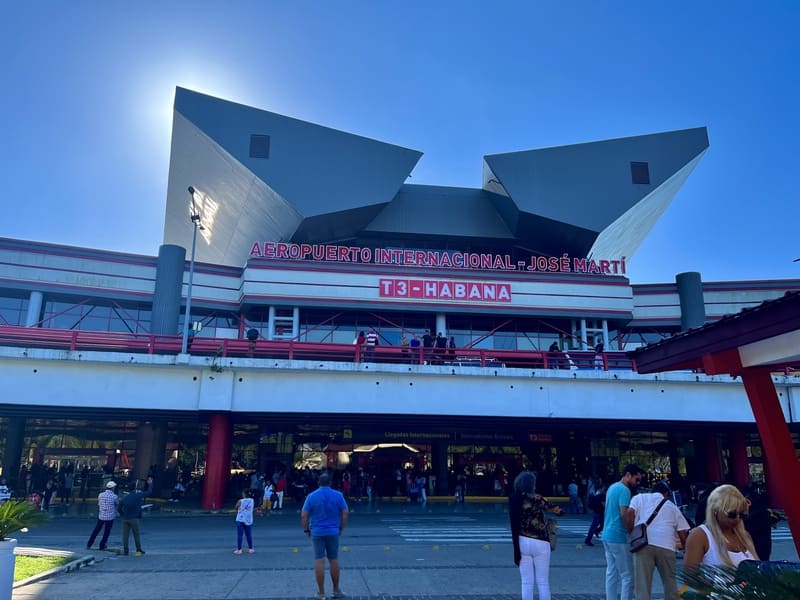
Everyone around us was American.
After nearly everyone going through customs made their way through, they circled back to us and asked us a few questions. Easy questions.
“What is your reason for coming to Cuba?…
Where are you staying?..
What is your profession?…”
Keep in mind, as an American, you are not there for tourism. You are there for support for the Cuban people.
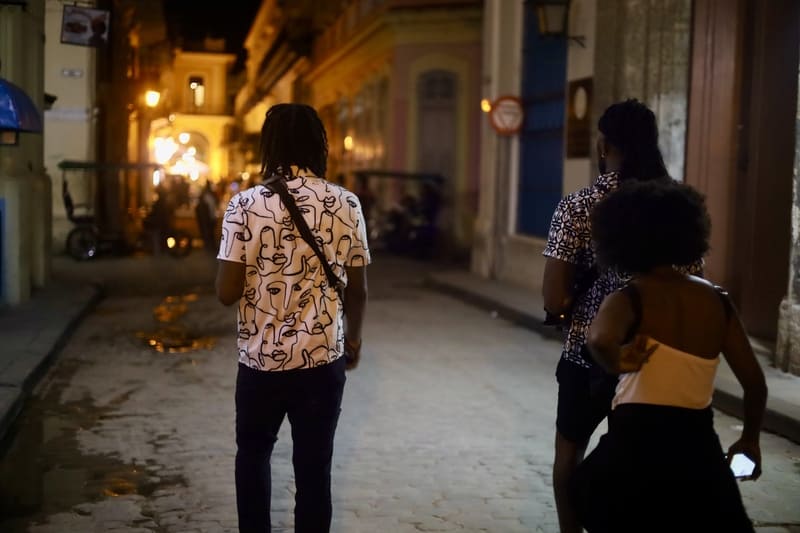
Also as an American, you are not staying in government-run hotels or resorts, you are staying in a local Cuban’s house known as a “casa particular” (more on that below).
You have the official address to the casa particular ready to display to the airport agent, as well.
In some cases, Cuban customs will ask you for your full itinerary. They did not ask us for this specifically, but it’s always best to just come prepared with a detailed itinerary of where you will visit and where you will be staying.
For details on our Cuba itinerary, check out our guide and itinerary HERE.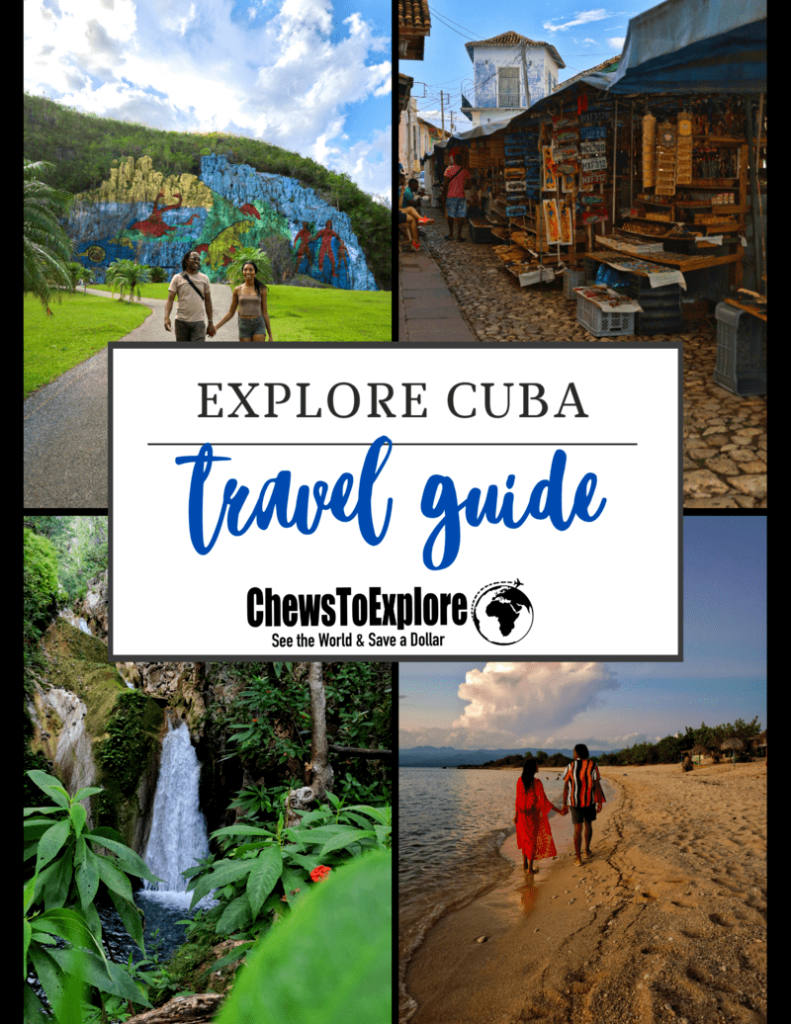
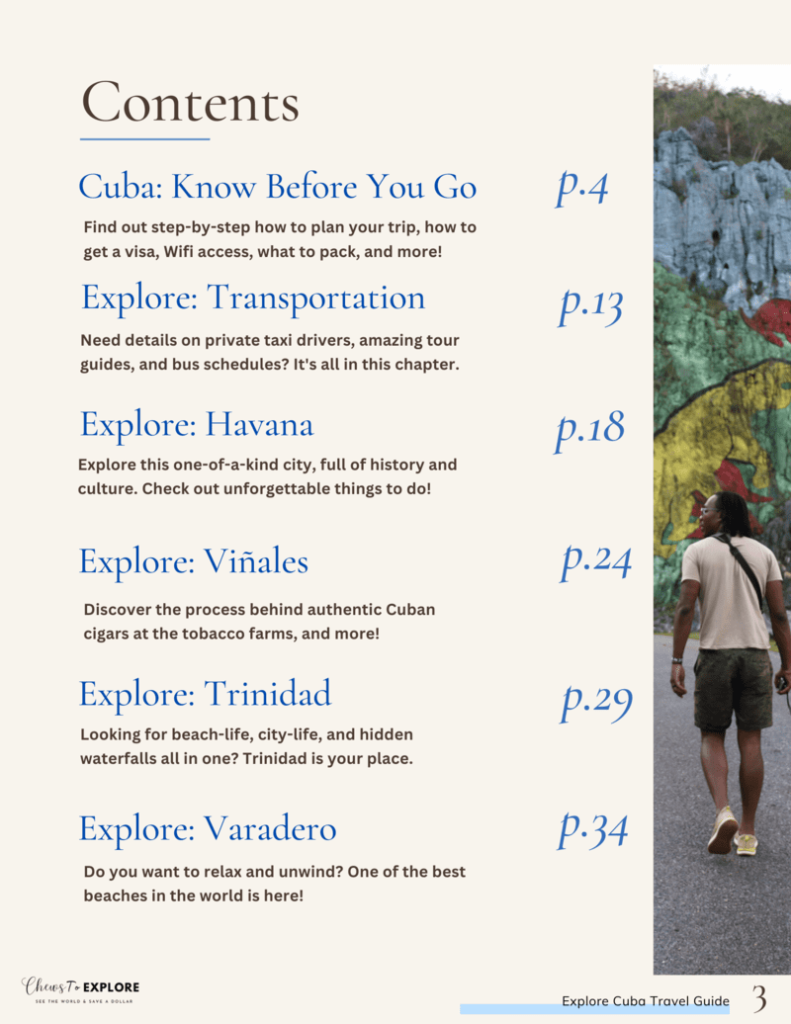
The recommendations in our travel guide are organized by budget, to ensure you “See the World, Save a Dollar!”
After we answered the customs questions, we were directed back to the original customs agent who had our passports.
He then stamped our passports one by one and let us through to the next room.
The next room was where we went through a security check.
Of note, drones are banned.
You already are on higher alert as an American so do not try to bring a drone into this country.
We knew this ahead of time which is why you won’t find any drone footage from our Cuba trip.
You make it through security, and the warm Havana weather hits you.
It’s time to exchange some of your US dollars before you head to your next adventure in Cuba!
RELATED ARTICLE: 14 Common Travel Mistakes (& How to Avoid Them At All Costs!)
Money in Cuba
This is an extremely important section.
As an American in Cuba, your US credit cards and US debit cards will not work in Cuba. You need to bring more than enough cash with you for your entire trip.
Also, do not mention Cuba to your bank.
Do not even mention Cuba in a Cashapp or Venmo note.
We traveled to Cuba in a group of six. One person in our group was booking the casa particular, so we each sent money to that person.
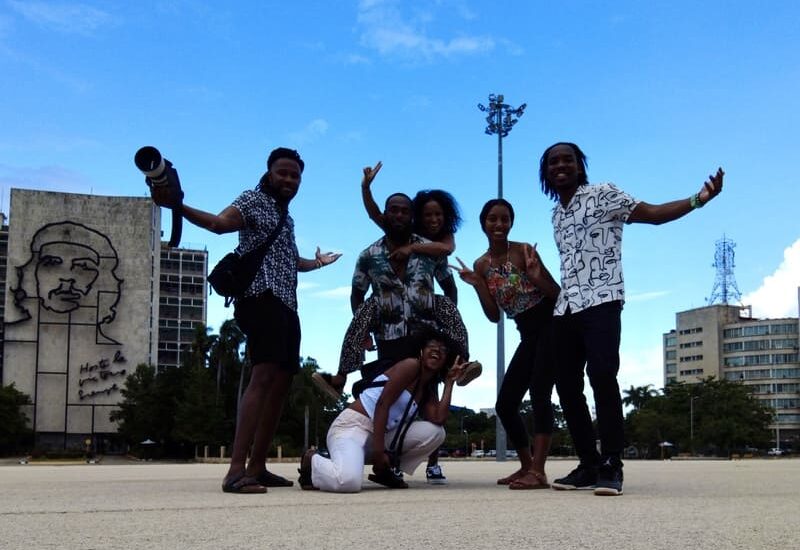
The minute somebody wrote “For Cuba Casa Particular” in the Venmo note, their bank blocked that transaction.
Their bank also asked for a lot of details, including an itinerary. Just do not mention “Cuba” in anything bank-related to avoid any extra hassle with your bank account.
But be sure to bring more than the amount of cash that you think you will need to Cuba.
As an American, the minute you run out of cash, you will not be able to get anymore cash out. Your U.S. cards will not work!

Cuba is very safe.
Throughout our entire trip we didn’t feel threatened or unsafe at any point in time.
Cuba has a low crime rate and very low tolerance for weapons and drugs.
Although you are bringing an entire trip’s worth of cash with you into the country, you should keep the cash in separate places. Some in your day bag, some in your main bag.

There used to be the CUC and the CUP Cuban currencies.
There is currently only one unified Cuban currency which is the Cuban peso. However, this is not usually their preferred method of payment.
Many times they prefer the US dollar or Euro.
This is why we do not recommend you exchange all your U.S. dollars to pesos as soon as you get to the airport.
There is an official exchange rate and there is a black market rate. The official rate is around 120 pesos for 1 USD (might even be a little less at the airport).
On the black market you may be able to get a better rate of around 160 pesos for 1 USD.
That difference will determine how far your money will go.
Remember you only have cash for your trip, so you will want your money to go pretty far in Cuba!

But what’s the black market? It’s the market that is not regulated by the Cuban government.
You can exchange your money with people on the street who ask to exchange money with you. Just be sure you know the rate before you agree to exchange with them.
RELATED ARTICLE: How to Spend One Week in Panama
Wifi in Cuba
When you go to Cuba as an American, you are literally disconnected from everything.
Your phone service will not work and internet access is not readily available in many areas.
When you land in the Havana airport, you will need to have screenshots of important documents such as your casa particular address and location, and completed D’Viajero form as you won’t be able to access them without any connection.
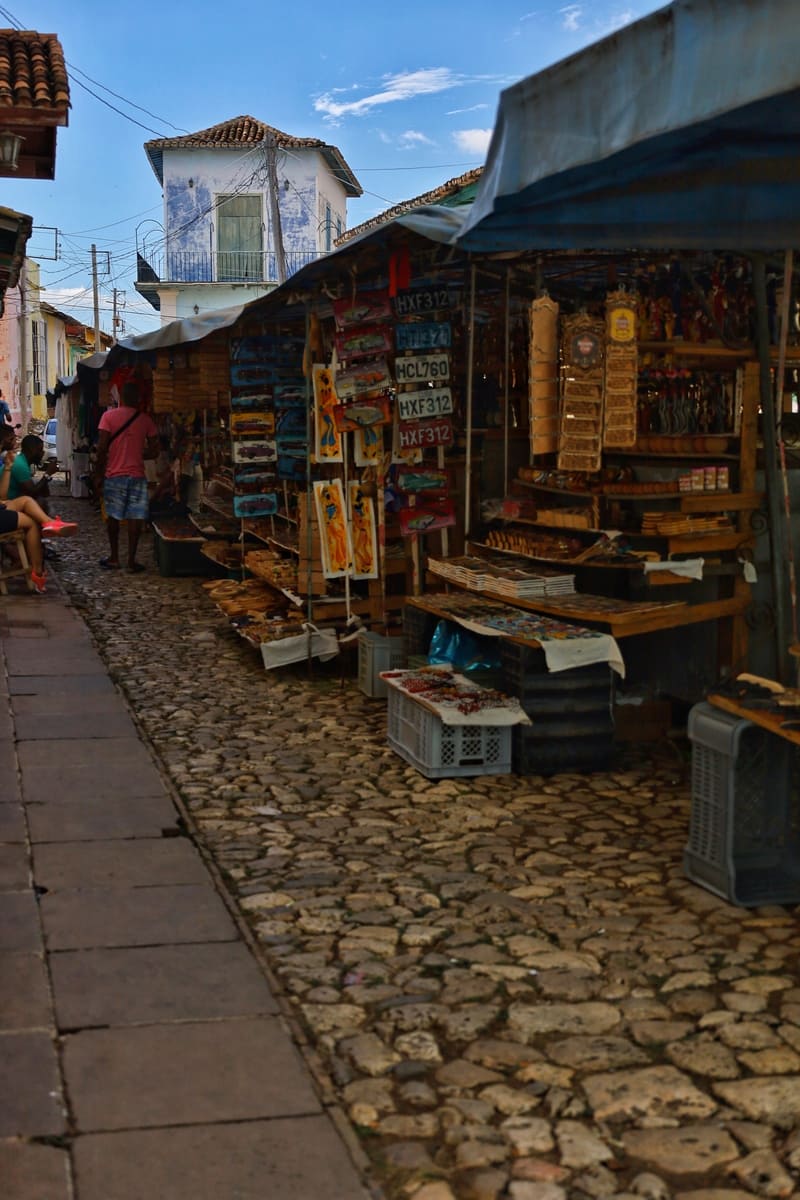
Wifi was not accessible until 2015 in Cuba and was only available in Wifi parks. Nowadays, Wifi is more accessible, but not like what you are used to in the United States.
Some casa particulares have Wifi and some may not. Also, public Wifi is not free. You will need to purchase a Wifi card.
Even though the Wifi is not free, it is really inexpensive. For about $1 USD you can get 5 hours of Wifi access.
You can get your Wifi cards near the Havana airport. First, you need to exchange a small amount of cash because the Wifi card office at the airport only accepts Cuban pesos and credit cards.
Mind you, using a credit card is never an option for Americans. US cards do not work in Cuba.
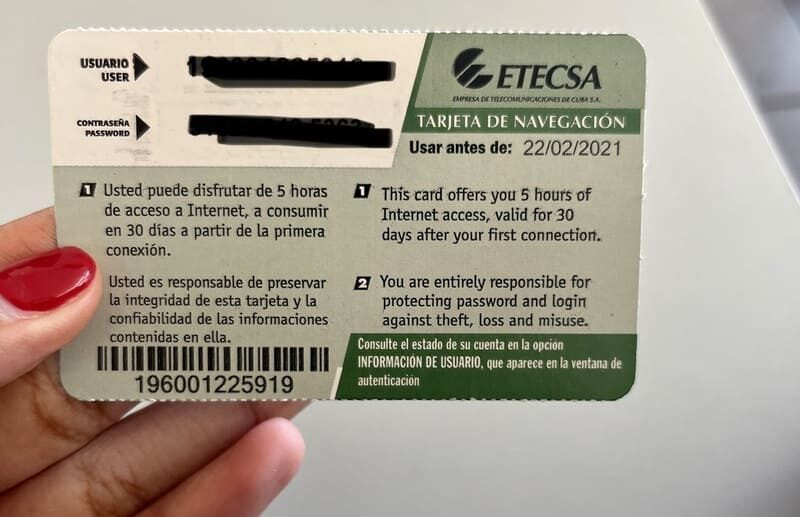
We include full details in the Explore Cuba Travel Guide on where exactly to exchange a small amount of cash in the Havana airport, where to find the Wifi card office, where to find Wifi hotspots in the Havana airport and throughout Cuba, and how to use your Wifi card.
So even after you purchase the Wifi card, you need to know specifically where to go to be able to access any Wifi. Additionally, some American websites are blocked in Cuba.
This includes Airbnb!
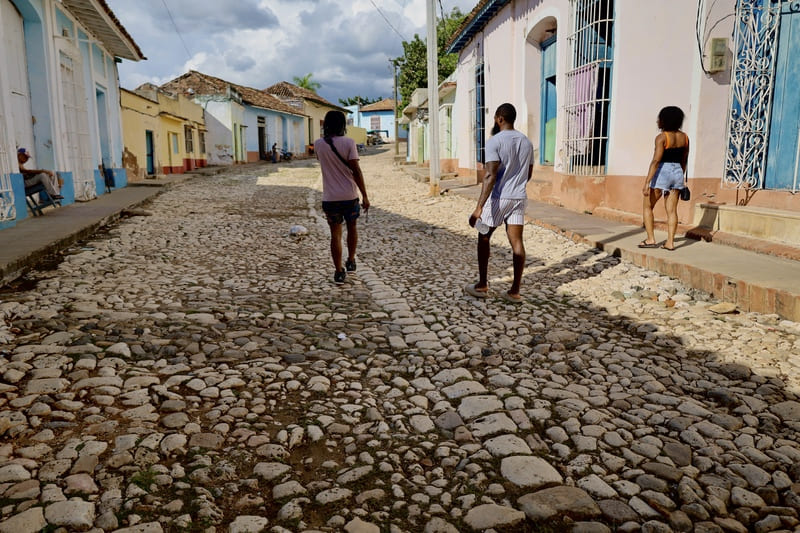
You may have booked your casa particular through Airbnb or booked a private tour through Airbnb experiences, and you should keep screenshots of those confirmations and contact details.
You will not be able to access the Airbnb website or any other American-based blocked website to make any new bookings once you get to Cuba. This is where having a VPN comes in handy!

A VPN allows you private access to websites that would otherwise be blocked in Cuba. We recommend ExpressVPN for a more stable and secure connection.
This VPN will allow you more unrestricted online access and should be downloaded prior to getting to Cuba.
Download ExpressVPN HERE to get your first 3 months free!
Where to Stay in Cuba?: Casa Particulares
As an American, you are not in Cuba to support the Cuban government. You are there to support the Cuban people.
There’s a lot of hotels that are government-run, but as an American you cannot stay there.
You will need to stay in what is known as a casa particular.
Casa particulares are accommodations where you will be staying in the private homes of local Cubans.
This can be either your own space that is rented from a local Cuban or a shared space in their home.

We have over 30 casa particulares throughout Havana, Trinidad, Viñales, and Varadero included in the Explore Cuba Travel Guide that are easy for you to book!
Your casa particular host will be one of your best resources during your stay in Cuba.
They’ll be able to give you many different recommendations on things to do, places to eat, and current events.
Also if you’re not comfortable exchanging money with local people on the street, you can usually exchange money with your casa particular host.
RELATED ARTICLE: How Airbnb Works
Food in Cuba
Let’s not even begin to sugarcoat anything. Finding food in Cuba is a struggle.
Finding good food in Cuba is a whole other story.
In fact, the expensiveness of a restaurant generally has no correlation with the quality of the food in Cuba.
In America, when you go to a Cuban restaurant there are lots of seasonings and flavors.
If you just walk into a random restaurant in Cuba, they may not have any seasoning. Sometimes they only use salt.
This all has to do with the rationing system in Cuba.
They are only allowed certain amounts of different types of food.
If you find some other meats, or seafood, it’s from the black market that is not regulated by the Cuban government.
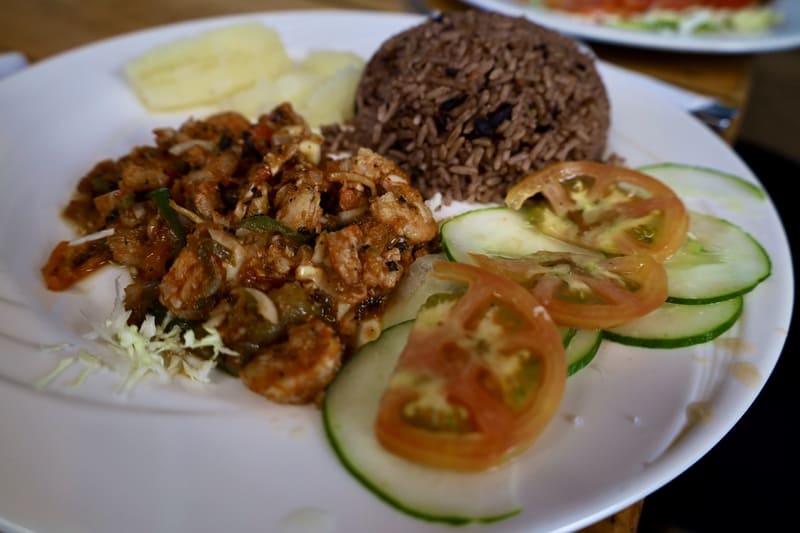
Cuba is very unique because they typically do not give you a menu.
They’ll come and tell you what they have to offer that day.
Even if there is a menu, they likely do not have all the menu items available.
It is better to just ask what they have available for that day. If you have different dietary restrictions, it may be difficult to find food for you.
For instance, there was one restaurant that only had pork and beer available.
No sides.
No vegetarian options.
No regular drinks.
Just pork and beer that day.
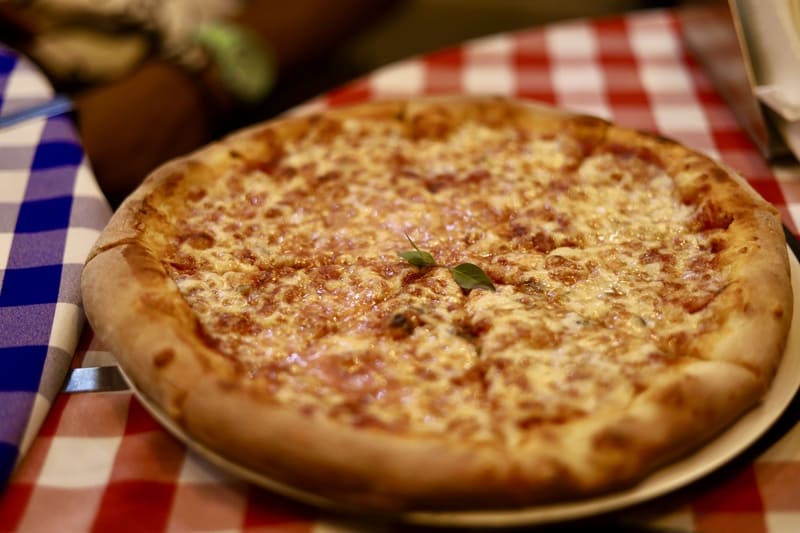
We have over 30 top-rated restaurants to choose from in the Explore Cuba Travel Guide so you can have a plan A, B, and C for where you can try to find food that meets your dietary needs.
We also recommend that you pack some snacks with you, as long as they are dry foods and meet TSA requirements. (We have more details on that in our “Key Airport Tips to Make Travel Easier for First Time Flyers” blog post!)

RELATED ARTICLE: Food in Aruba: 6 Must-Try Restaurants
Transportation in Cuba
All over Cuba, you’ll find old cars from the 1950’s.
The U.S. trade embargo limited Cuba from getting new cars.
They have had to maintain these really old classic cars throughout all of these years. Imagine that.

You’ll find some old classic gems but you will also find some old dusty cars too.
The air quality is heavier in Cuba, as well. These old cars are not eco-friendly.
Also, transportation outside of Havana to another city can become expensive.
These cars from the 1950s are not gas or energy-efficient. Also, Cuba is huge!
Cuba is the biggest island in the Caribbean so transportation to other cities can be expensive if you don’t have connections to save money.
We included the private local drivers who gave us really fair rates and inter-city bus schedules in the Explore Cuba Travel Guide for your easy reference.
Learn Cuban Spanish
One of the best parts of travel is the opportunity to immerse yourself into new cultures.
You can more easily immerse yourself by communicating with the locals.
American citizens traveling to Cuba for the support for the Cuban people should definitely be communicating with the locals!
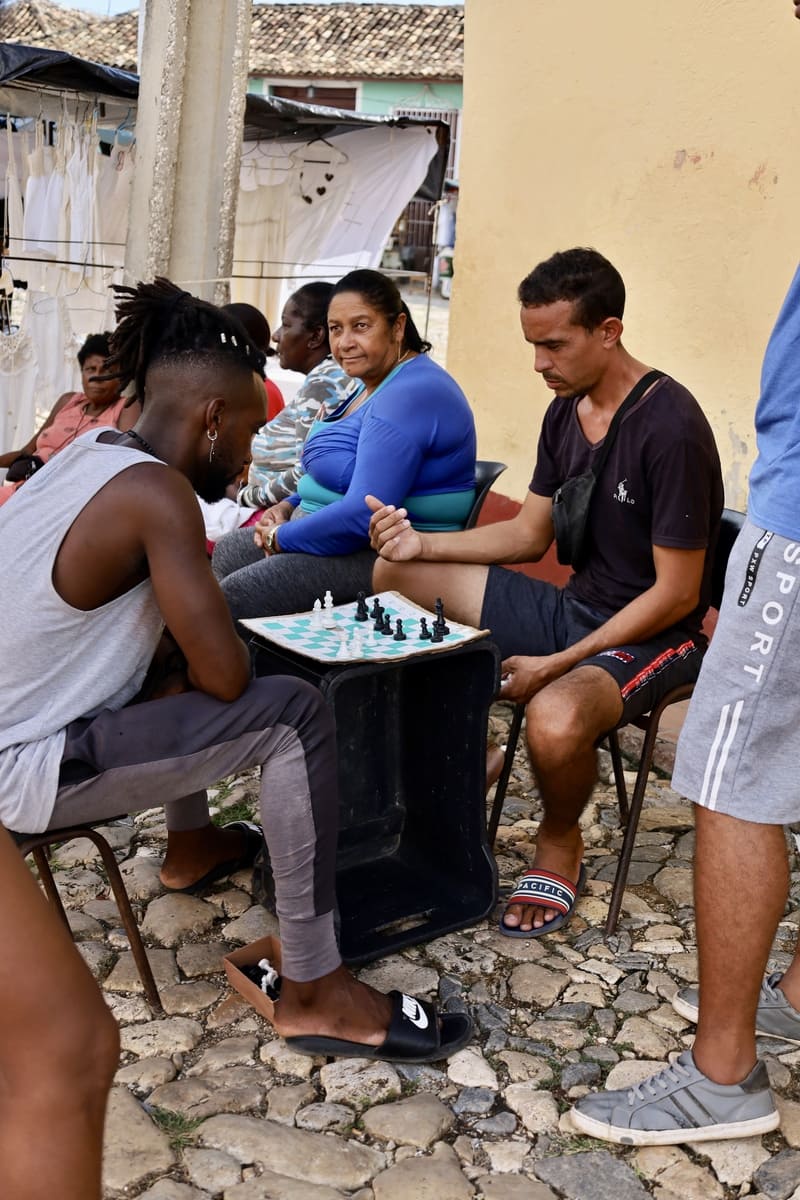
All people smile in the same language.
But let’s take this a step further. Let’s really create new bonds.
Understand their stories and lifestyles.
There’s plenty of sources out there to learn new languages.
One that has been REALLY useful is Babbel. It’s like you’re learning without even trying.
You can learn a new language right from your phone with Babbel.
Babbel offers personalized learning paths to fit your particular learning style.
You’ll learn how to speak confidently and fit in with the locals.
Challenge yourself to interact more with the locals on your trip!
It is so much more rewarding when you can also communicate in their language.
RELATED ARTICLE: Bucketlist Things to Do in El Salvador
Cuba Packing List
So far, you’ve planned:
- your reason for travel
- how to get your tourist card
- how to book your cheap flight to Cuba
- your health insurance for Cuba
- how to maneuver the Havana airport
- to have plenty of cash
- how to access Wifi in Cuba
- to keep screenshots of all important documents
- to stay in casas particulares
- to hire private local drivers or planned to buy bus tickets
- where to find food
- to learn some Spanish phrases
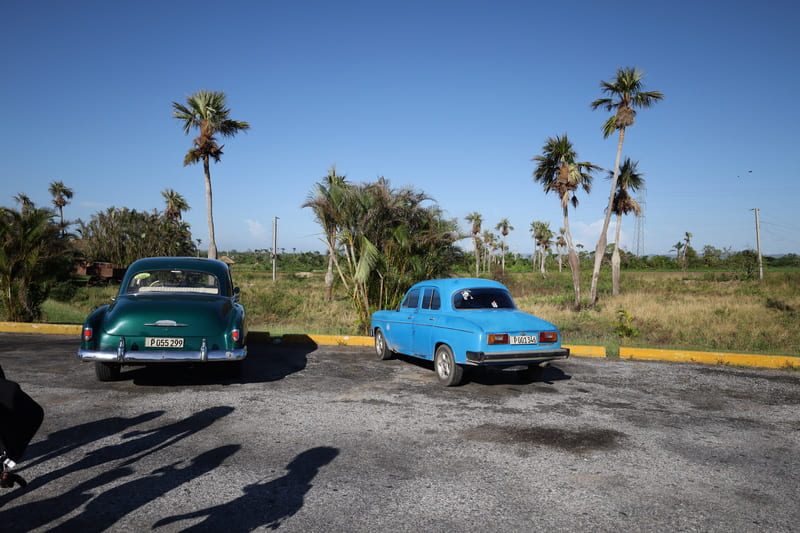
You’re just about ready to go to Cuba! You just need to pack your bags.
Remember to bring:
- US passport
- Tourist visa
- Completed D’Viajero form
- Proof of health insurance
- Sunscreen
- Bug spray
- Anti-theft day bag
- Water shoes
- Toilet tissue (not always available in public restrooms)
Also, bring items to donate to the local Cubans. They lack many basic needs. Bring extra toilet tissue, feminine hygiene products (pads, tampons), school supplies, condoms, and clothes to donate.

According to our local tour guide from Cuba, you should give your donations to the local Cuban people that you see on the street.
Otherwise, if you bring your donations to an official organization, they might go back to the government and not to the people who need it the most.
Returning to the United States from Cuba
The Havana airport can be very crowded and busy.
I recommend that you go to your flight extra early (at least three hours before your flight) to ensure you don’t run into any issues getting back home.
In our experience, it only took us 40 minutes to get through Cuban customs and security.
We also did not come with any checked bags, only the best carry-on bags.
Even if you only use a carry-on to travel, you should still arrive at the airport early. We have heard stories of travelers nearly missing their flights because of how busy the airport can get.
Make sure you have your Cuba tourist card, US passport, and boarding ticket ready to present to the agents.
When you land back in the United States, you will need to go through the US customs line.
They may ask you common questions such as what was your reason for travel (not tourism!) and how many days you spent in Cuba.
We had Global Entry.
The Global Entry line was empty. We scanned our passports, scanned our fingerprints, and then completed a quick declaration form at the automatic kiosk.
After we spent one minute doing that, we walked right out the airport and headed home.
Global Entry makes everything quick and easy, and we have more details on Global Entry linked in our “First Time Flyers” blog post.

Explore Cuba Travel Guide
Now that you know how to plan a trip to Cuba from the U.S, you should be equipped with what to plan for your trip to Cuba!
Our 31-page Explore Cuba Travel Guide breaks down all the best recommendations for your time in major cities like Havana, Trinidad, Viñales, and Varadero.
There’s over 80 recommendations included in the Explore Cuba Travel Guide and they are organized by budget to help you See the World, Save a Dollar!


This 38-page digital guide breaks down every detail you need to know before exploring Cuba, even as an American.
Info on Havana, Trinidad, Viñales and Varadero are all included.
This one-of-a-kind travel guide is filled with first-hand experience and insider tips!
What’s inside the travel guide:
- How to get a visa
- What to pack
- How to access Wifi
- Private taxi driver numbers
- Over 20 unique things to do (many are FREE!)
- Over 30 top-rated places to eat
- Over 30 casa particular recommendations
- Sample 5-day itinerary through Cuba
Our recommendations are organized by budget, so as always, we’ll help you “See the World, Save a Dollar!”
Be sure to download the “Explore Cuba Travel Guide” to make trip planning quick, easy, and affordable!

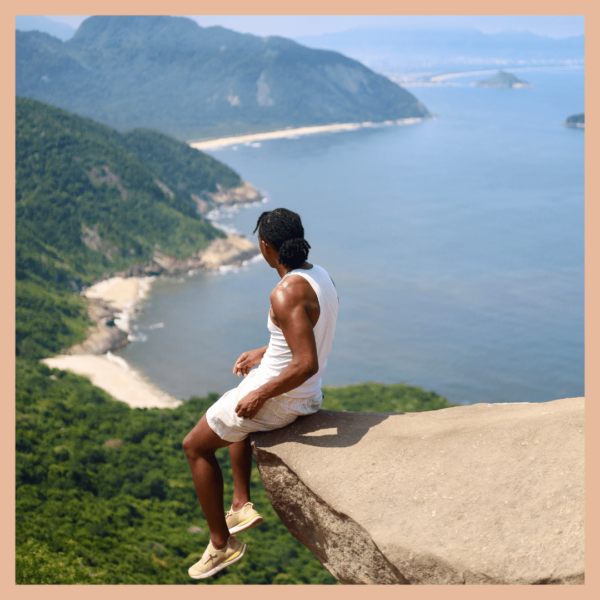

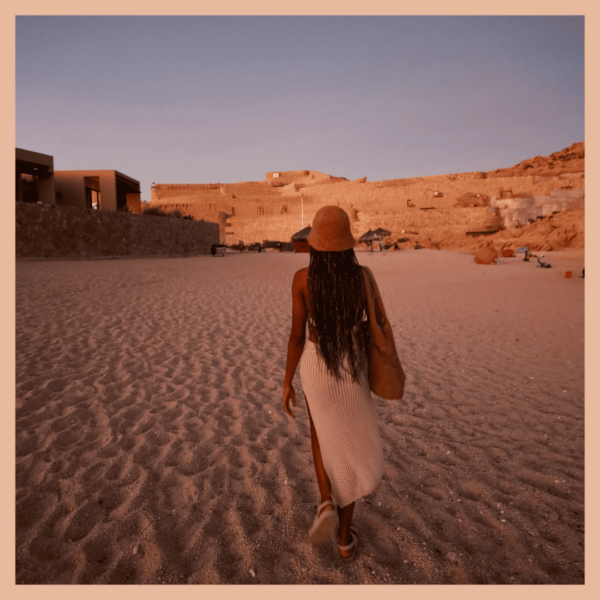
This is such an in-depth guide! I had no idea that Americans couldn’t travel to Cuba. The packing list is super helpful!
Thank you so much for checking out our article! Yes, there has been a lot of misconceptions on Americans traveling to Cuba. But as you can see, there are ways for Americans to legally visit the country. I’m glad you have found this helpful!
Can you please share who you booked for your day trip for Vinales – Alexandra
Yes we had an amazing time with Alizandra! All of her contact details (and soooo much more useful information!) are included in our Explore Cuba Travel Guide 🙂
We just discovered your channel and site while looking for info on Cuba – you guys do a great job and are fun to watch – we subscribed!
Thanks so much for checking us out and for all the support! It is truly appreciated! We have a lot more great content coming 🙂